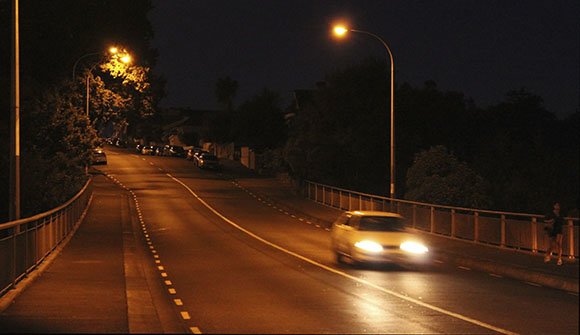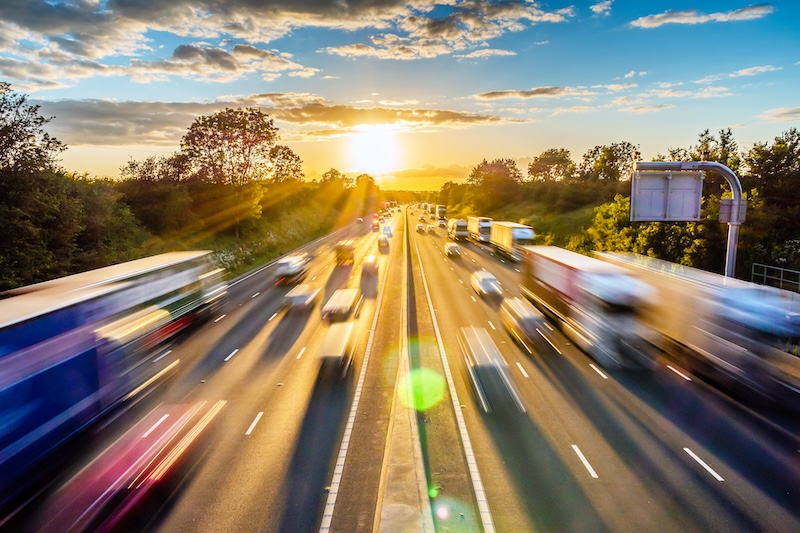Top 10 tips for night driving this Halloween

Halloween is coming and your little ones are probably already getting excited at the prospect of dressing up as their favourite monsters and heading off in search of treats.
But for motorists, driving on busy Halloween streets in the dark can be intimidating — particularly for those who have recently qualified or are inexperienced.
Driving in the dark can also be dangerous — a 2017 survey by the Royal Society for the Prevention of Accidents (RoSPA) found that 40% of all collisions happen at night.
So, make sure you don’t get tricked by night-time driving: treat yourself to our top 10 tips for driving in the dark.
Check your bulbs
Motoring experts recommend checking your lights every couple of weeks to make sure all your bulbs are working properly and your lights are clean. Not only will this keep you safe on the road, but with Halloween coming up, it’ll also mean you can see any kids out and about trick or treating.
When checking your bulbs are working, make sure you look at every light on your car, not just headlights and brake lights. This includes fog lights — particularly important in winter — the lights around your number plate, and even the cabin light.
Invest in some night driving glasses
Driving in the dark severely reduces your vision in an environment that will have constantly changing light levels as you pass streetlights. If you have problems with your vision, you should ensure that you’re wearing the right glasses for driving at night.
Even if you don’t normally need to wear glasses, some opticians will recommend investing in a pair specifically for night-time driving. You should get regular eye check-ups with an optician to make sure you’re wearing the right glasses.
Keep your windows clear
If your windscreen is smeared, the glare from streetlights and the headlights of other cars will also be smeared, which will severely compromise your vision and could cause a distraction if you try to clean it.
Smears and other marks on your windscreen might also lead to blind spots in your vision. On Halloween, this could mean you fail to spot a child or pedestrian stepping out into the road. So, keep yourself and others safe by making sure all your windows are crystal clear.
Look out for pedestrians
While the roads are obviously much busier on Halloween, it’s important to be aware that many of the pedestrians will be children who are distracted by the festivities and unfamiliar with being on the streets at night. This means that motorists should take extra care, particularly in residential areas.
It goes without saying that you should always respect the speed limit, but if a road is particularly busy then drop your speed even lower to give yourself more time to react if a pedestrian steps out in front of your car.
Also, be aware that many children will be dressed up, meaning they may be even less visible to motorists, so be extra cautious behind the wheel!
Be aware of cyclists
Cycling is becoming more and more popular in the UK, and it’s important that all motorists drive cautiously around cyclists, particularly at night. Always check for cyclists before making manoeuvres, don’t drive aggressively around bikes, and never try and pass a cyclist if you can’t give the rider enough space — a least 1.5m.
While the vast majority of cyclists have well-lit bikes and wear reflective clothing, bear in mind that some don’t, so be vigilant about bikes at all times. On Halloween, there will be children out trick or treating on their bikes too, so keep your speed right down and expect the unexpected.
Don’t drive tired
Because your body is accustomed to sleeping when the sun goes down, driving at night can mean motorists get tired behind the wheel. Driving tired can be one of the most dangerous things you can do, and with the number of pedestrians on the street at Halloween, it could be deadly.
When you start to feel tired, stop and take a break. If you’re heading off on a long journey, then schedule in some rest stops at motorway service stations to keep yourself hydrated, energised, and rested. Another good tip is to open the window and let the cool air help keep you awake.
Use your lights correctly
Before setting off in any new car it’s important to familiarise yourself with how the headlights work and how you operate the full beam function.
Full beams can dazzle other road users, including pedestrians, cyclists, and other motorists who could lose control of their vehicle if blinded by your headlights.
Full beam should only be used on empty roads where there are no other vehicles, not the street-lit urban roads where trick or treaters are likely to be.
If you encounter another vehicle — either oncoming or ahead of you on the road — you should dip your headlights.
Watch out for animals
If you’re driving at night — particularly in rural or heavily wooded areas — then be prepared to come across some wildlife on the roads. The UK has a whole host of nocturnal animals that are active at night, which is great for nature enthusiasts but can be a deadly problem for motorists.
Some areas have signposts warning drivers of increased animal activity, but wherever you are, you should be on your guard at all times. Keep your speed down and watch out for the reflective retinas of animals along the roadside that light up in the glare of your headlights.
Don’t stare at oncoming beams
It might sound obvious, but if you’re inexperienced in night-time driving, make sure you don’t stare directly at the headlights of oncoming vehicles. This will massively impair your vision, leaving you much more likely to run off the road or be involved in a collision.
If it’s safe to do so, look towards the left-hand side of the road — perhaps focusing on the white light painted at the road’s edge — until the oncoming vehicle has passed.
Stay back
While tailgating is always dangerous, when you’re driving at night you should leave even more space between you and the vehicle in front than you would normally.
Driving in the dark reduces the visibility of what’s in front of you, so this extra space will allow you to better react if something happens.
Traveling too close to the car in front will also likely make the other driver nervous, while the reflection of your headlights in their rear-view mirror could leave them dazzled.
Keep your distance when driving at night and create a better driving environment for both yourself and other drivers.
To keep up to date with all the driving tips you could ever need, make sure you visit 1ST Central’s Hub for all things related to driving.


